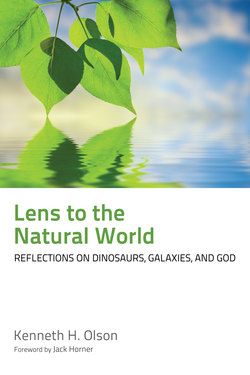Читать книгу Lens to the Natural World - Kenneth H. Olson - Страница 6
На сайте Литреса книга снята с продажи.
Preface
ОглавлениеIt is said that the English biologist J. B. S. Haldane was once asked what the diversity of life tells us of the Creator and is alleged to have replied, “God must have an inordinate fondness for beetles!” (Approximately one-fifth of all the world’s species of living things were classified as such.) The dinosaurs, also, were of many and various kinds. In size, they ranged from very small to the largest land animals ever to have existed, and new discoveries have shown that many had surprising adaptations to the world around them. In color and form, some of them must have been truly spectacular. Their diversity stretched over more than 150 million years of earth’s history, enough to give credence to the idea that God must have loved dinosaurs.
This collection of essays is about them and about a whole range of other prehistoric creatures, the settings they inhabited, and about the science of paleontology, which seeks to reconstruct their Lost Worlds from the evidence of fossils in the rocks. In addition, it also concerns the world we know today, which also is filled with countless forms of marvelous beings. Thus, these pages have to do, overall, with our context in the natural world, from our terrestrial home in earth’s biosphere to the entire universe of glittering galaxies strewn through deep space on a scale beyond comprehension. Still further, they have to do with our attitudes toward all of it. What is Nature, anyway? The answer is not nearly as simple as is the question.
These reflections take seriously the fact that science has relocated our own species in an immensity of both space and time. One is surely led to ask about our place in it all, and questions emerge having to do with science and religion, with their relationship to one another and, in particular, with creation and evolution.
In a terse line with both profound truth and wide application, Longfellow wrote, “There are no birds in last year’s nests.” Indeed, we must live in the present and look to the future. However, we also learn from the past, which, as geology shows, is long beyond all words. Will the Tree of Life have abundant nests year after year for untold generations to come?
We are not above nature, as we have so often imagined. Not only are we in the midst of it, we are part of it, intimately connected to the smallest protozoan, as well as to those vast systems of stars, the dust of which is in our blood and bones. This means that we, too, are Nature and that we must, in a much wider sense than ever before, all be naturalists and love and care for the earth.
